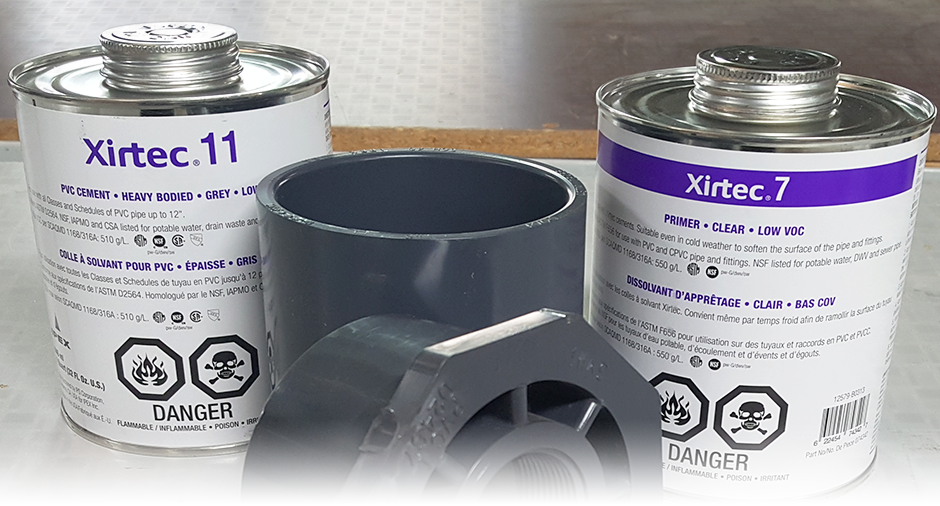
Solvent welding with PVC pipe & fittings
PVC pipe and fittings are normally bonded by using a solvent commonly known as PVC Cement. The user will normally apply a generous amount of PVC Primer in order to provide a clean surface for the cement to be applied to. After both sides of the parts have been treated with primer, the cement comes in. The user will apply the PVC cement with a brush, which is normally fixed to the underside of the containers lid. Cement is applied to both sides to be joined and then the parts are pressed together using a twisting motion for best results. Once the parts are fully pressed together, the joint sits and eventually becomes essentially one piece.
The Science of PVC Cement (The very basic version)
The interesting part of this chemical bonding process lies in the science of it all. The moment the PVC cement touches the PVC fitting or pipe, it begins to dissolve the plastic. When this occurs, the PVC molecules are able to move freely within the solvent and PVC filler contained in the cement. As the joint begins to dry, the active solvent actually permeates through the PVC parts. This process of drying stops the PVC molecules from moving, thus creating one bonded piece.
Quick Tips
![]()
Always use primer. Primer is extremely important to creating a strong, airtight and long lasting PVC joint. The chemical process of priming prepares the fittings or pipe by breaking down the smooth shiny surface of the fitting or pipe. Once the primer is applied, the resulting surface is one that the PVC cement will adhere to much more easily than non primed cement.
![]()
Make sure your pipe is cut square. If your pipe is cut square you can be sure that the edge of the pipe meets the inside edge of the socket fitting. If the pipe is not cut square, the user runs the risk of creating a space void of any material and therefore a potential weak point.
![]()
"Break the edge" of the spigot side. If the edge of the spigot side is not de-burred, the cement will get pushed to the back of the socket. If you scrape, de-burr or lightly grind the edge off the spigot, this will prevent an excessive amount of cement from getting pushed to the back of the socket.
![]()
Use the correct amount of PVC cement. If you fail to use the proper amount of cement on your joint, you run one of two risks depending on which end of the spectrum you land on. If you use too little cement, you run the obvious risk of creating spots inside the joint which are not coated and therefore not bonded. Too much cement and you could cause a pool of cement to build on the inside of the joint. Because the solvent in the cement breaks down the PVC, you run the risk of having a weak spot at the point the cement pooled.
![]()
Work in a well ventilated area. PVC cement vapors are toxic and you should avoid inhaling them. When cementing, users should always try to work in a well ventilated area.
![]()
While pushing the parts together, use a twisting motion, about 90 degrees. This helps spread the cement inside the joint, creating a more air tight seal.
![]()
Make sure the spigot end goes as far as possible into the socket fitting. Pressing the spigot side of the PVC fitting as far as possible into the socket side of the joint ensures that there will not be empty space at the back of the socket. This helps make the strongest possible joint.


